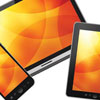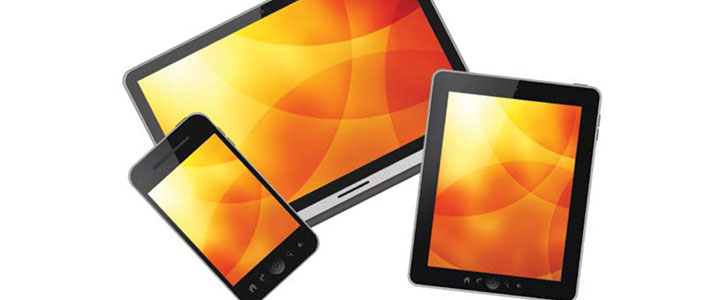
An Essential Tool
Customer-centric security operations now require mobility
 Mobile devices and mobile apps have become a fixture in the
lives of people around the globe. They are now beginning to
make a profound change in the way CSOs and security directors
manage and provide security to their organizations.
These devices and apps enable more convenience, more options
and more support for customers, management teams, clients, employees,
contractors and visitors.
Mobile devices and mobile apps have become a fixture in the
lives of people around the globe. They are now beginning to
make a profound change in the way CSOs and security directors
manage and provide security to their organizations.
These devices and apps enable more convenience, more options
and more support for customers, management teams, clients, employees,
contractors and visitors.
Initially, security systems were tasked with simplifying guarding operations and
encompassed a wide range of actions including access control, video surveillance,
intrusion detection and fire suppression. As a result, a typical organization developed
a large footprint of complex security systems with minimal interaction—either
between systems or with customers who were using these systems daily. These
diverse systems often included proprietary hardware, complicated user interfaces
and expensive maintenance plans.
Newer breeds of applications, such as Physical Security Information Management
(PSIM) and Physical Identity and Access Management (PIAM), have improved
many of these issues, including features like self-service for end users, audit
certification by access area owners, management dashboards, situational awareness
and response checklists. This evolution helped elevate security to a senior
management level discussion, as it now touched on ROI, efficiency, compliance,
customer service and cost reduction.
At the same time, global trends, continuing budget awareness and mobility began
are making an impact on security operations. Since 2008, the highly-competitive,
budget environment ensures that only those organizations that can successfully
focus, adapt and deliver value to their customers can survive—companies like
Netflix, Adobe, Amazon, Capital One and Harrah’s.
To thrive, an organization must clearly identify its key customers and deliver
near-flawless customer service across all interactions by anticipating customer
needs, taking targeted action and responding in real-time.
Historical Trends Provide a Gateway
Around 2008, there was a geometric expansion in the consumer world of mobile
devices and applications, providing simple and user-centric functionality. Tasks
like making airline reservations or submitting expense reports became automated
and simple for the user. These devices had a clean look and feel, a small footprint,
and were so intuitive and user-friendly that virtually anyone could use them without
any training.
These trends have provided the security industry with insights and a pathway to
transform security from a purely operational discipline into one that is customercentric.
Leveraging the new breed of applications—PIAM and PSIM—along with
mobility not only enhances security operations but also delivers more business
value to organizations. Customer-centric security identifies valuable customers
and then puts them at the core of its security strategy and day-to-day operations,
defining results and outcomes in customer terms.
This is where security directors can take the lead and make a meaningful difference
in developing a customer-centric security plan that leverages mobile as a new
way to interact with their customers and enhance security operations. A customercentric
approach in planning, building and deploying mobile apps for security helps
security departments connect with their users and ensures that the final product
offers optimal usability, convenience and a superior experience for employees and
others. Customer feedback is a key component of every physical security request or
transaction, and the integration of a mechanism to allow user feedback will provide
the necessary data for management to make ongoing improvements.
For example, customers may request specific functions from their mobile devices,
such as physical access approvals or completing NDAs from visitor kiosks,
all automated via a mobile app. Well-designed, automation software makes it easy
for the customer to make and approve requests, reduces response time, provides
auto-notification to the customer upon completion and gives the customer an opportunity
to rate the transaction. This increases customer satisfaction while providing
information to continually improve the process.
With each transaction, an advanced
PIAM application can automatically
update each of the many diverse security
systems, such as access control
and dispatch, while defining results in
customer terms like cycle time per request
and employee satisfaction ratings.
Apps should be developed with support
for all leading mobile platforms—iOS,
Android and Windows—to make certain
that an organization will be able to
benefit from every employee’s participation.
A responsive design will guarantee
support for smart devices of differing
sizes and resolutions.
Security Benefits of a
Customer-Centric Strategy
The customer-centric approach will
improve adoption rates among users.
Adoption is vital to the success of the
mobility platform; the program becomes
more robust as more users participate. A
number of productivity gains will begin
to become apparent, as well.
For example, security processes
will take less time to complete as users
are able to capitalize on travel time
and other non-productive time which
would otherwise be lost. By minimizing
approval and other delays, the process
becomes more efficient.
Additional benefits include a reduction
in program costs by eliminating the
need for multiple peripherals, minimizing
installation and IT support costs,
helping lower total cost of ownership
(TCO), and sending out quicker emergency
notifications to first responders.
Security and Beyond
Implementing a customer-centric security
strategy that enables employees and
others to conduct key business functions
from any location via mobile devices has
the potential to create positive results
that travel beyond the security department
to make a meaningful difference
throughout an entire organization.
If multiple key business functions
throughout an organization could
download applications critical to their
roles from a central repository, it could
have a strong, positive impact on personnel
satisfaction and productivity.
Employees, customers, suppliers and
business partners could each choose
the appropriate mobile applications for
their specific situation.
Beginning with the identification of
a small number of critical security requests,
for example, quickly registering contractors or vendors arriving at a data center for repairs would enable physical
access and tracking of all access requests. Security operations can become more
efficient and effective through the development of highly-focused, single-function
mobile applications that are designed for simplicity and utility to ensure quick
adoption.
Three Possible Outcomes
When customer-centric security applications are as much a part of the organization
as they are the consumer mindset, they will drive three optimal outcomes:
Process efficiency. Customer-centric apps enable employees and clients to save
time and increase their own efficiency by enabling them to perform activities such
as approvals, submissions, analytics and workflows on a mobile device.
One security-centric example of this would be a mobile app that allows data
center managers to approve physical access requests by reviewing each request by
identity and/or area risk profiles. Another mobile app could allow employees to
report a missing or lost ID card, while at the same time automatically and temporarily
turning their NFC-enabled smart phone into a physical access credential.
Each use of an app by an employee or visitor would automatically alert security
managers to any security policy violations along with remediation steps, or if security
requests are not closed within internally-mandated response times.
Productivity gains. Mobility can help achieve the goal of cost reduction by
fundamentally re-engineering existing security processes. This is made possible by
leveraging embedded features that are already available on mobile devices, like
plug-and-play accessories for:
- Driver’s license scanning for ID verification;
- location identification to enable an employee to send an alert that identifies his
or her location;
- image/barcode recognition for scanning visitor badges;
- capturing photographs for badging via cameras;
- tracking security guard patrols via accelerometer/gyroscope; and
- near-field communication so the phone can be used as an access credential.
Because these embedded technologies are already available on mobile devices
and because the communications infrastructure exists, the investment required to
enable these technologies is marginal compared to installing new hardware.
Customer experience. In-app messaging, ratings prompts and surveys make mobile
devices excellent tools for gauging how well a security department is delivering
services. By gathering real-time feedback from customers while they are using
each app, security gets actionable information on what needs improvement, what
services to prioritize next and how to justify security spend and budgets.
A visitor management app for mobile devices can empower users to review,
approve and/or deny access requests from inside a facility or remotely, and allow
visitor self-service check-in and check-out, or front desk administered check-in
and check-out via a smartphone or tablet. Reports related to visitors’ activities,
hosts’ activities, access requests, etc. can be generated with the click of a button.
Some businesses may be apprehensive about the security of mobile devices with
concerns of employees losing their devices or exposing corporate data through
poorly secured phones. Today, however, there are extremely effective techniques
for encrypting data, locating lost devices, “wiping” sensitive data from stolen or
misplaced devices, disabling devices and authenticating users through authorization
codes or biometric information, such as fingerprint or iris verification.
Getting the right information to the right person at the right time is critical to
the security of an organization. With the exponential growth of mobile devices,
access to critical information in real-time and the resolution of business issues
while on-the-go have become competitive advantages and game
changing assets for security professionals. It is now simple for
organizations to extend the reach to all of their physical security
solutions. In a world of increasing mobility, security will reap
the benefits.
This article originally appeared in the January 2014 issue of Security Today.